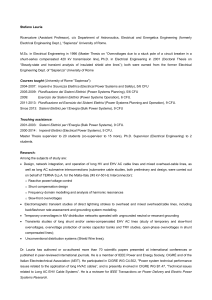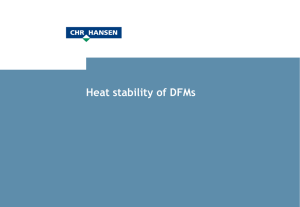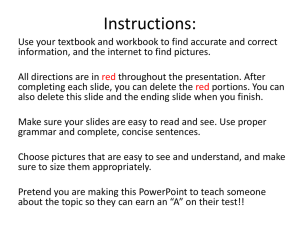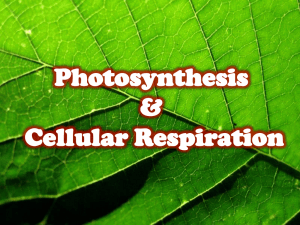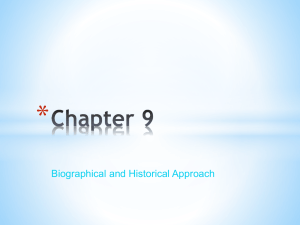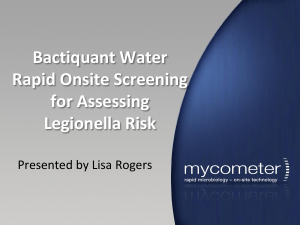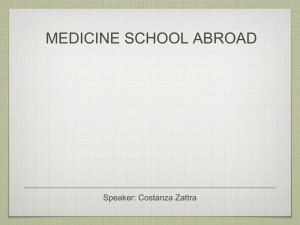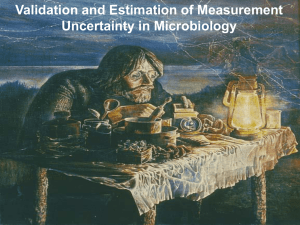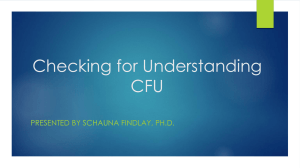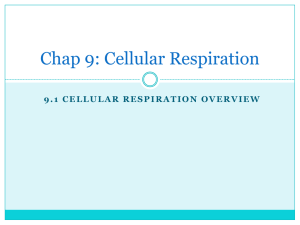Cells & Energy
advertisement
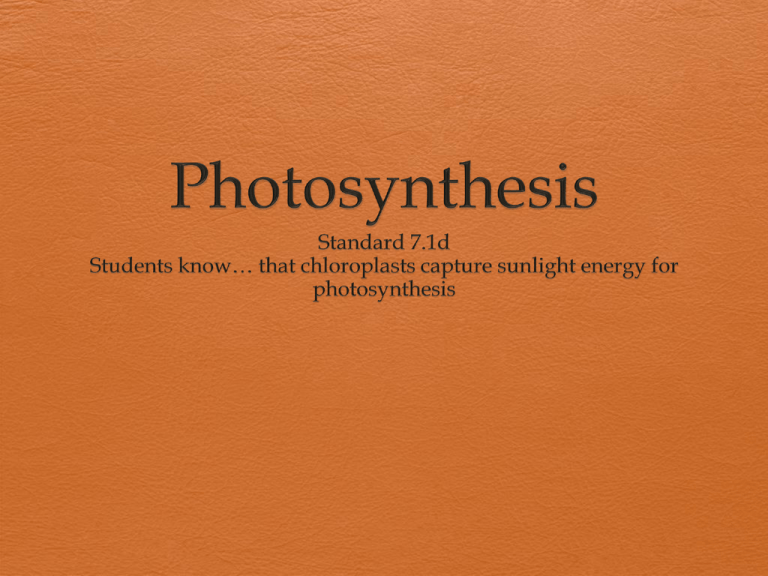
Objectives At the end of this lesson students will: • Be able to identify organisms that can carry out photosynthesis and those that cannot. • Be able to explain the process of photosynthesis. • Be able to name the reactants and products of photosynthesis. You all know plants use carbon dioxide and give us oxygen but there is more to the story… Definition Photosynthesis is a series of chemical reactions carried out by plants where energy from the sun is used to make glucose and oxygen. CFU: What is photosynthesis? CFU: What is made during photosynthesis? Inside the Plant Cells Plant cells contain special organelles called chloroplasts. This is where photosynthesis takes place. Chloroplasts contain the green substance chlorophyll which is responsible for collecting energy from the sun and making plants appear green. CFU: Where does photosynthesis occur? CFU: Are chloroplasts found in animal cells? CFU: What is the substance in the chloroplast that collects energy from the sun? Which organisms can carry out photosynthesis?? CFU: How do you know? Now you try…. On your whiteboard write down which organism you think can carry out photosynthesis… A. B. CFU: How do you know?? Lets do one more… On your whiteboard write down which organism you think can carry out photosynthesis… A. B. CFU: How do you know? Carbon Dioxide Sunlight Together they react in the chloroplast Water GLUCOSE OXYGEN CFU: Where does the water come from? CFU: Where does the carbon dioxide come from? Photosynthesis sunlight + Carbon Dioxide Reactants + water Glucose + Oxygen Products CFU: What are the substances that react (reactants)? CFU: What are the products of the reaction? CFU: How does photosynthesis benefit humans? Objectives At the end of this lesson students will: • Be able to explain the process of cellular respiration. • Be able to name the reactants and products of cellular respiration. • Be able to explain how photosynthesis and cellular respiration are related. Remember In the last lesson we learned that photosynthesis is a series of chemical reactions carried out by plants where energy from the sun is used to make glucose and oxygen. Photosynthesis sunlight + Carbon Dioxide Reactants + water Glucose + Oxygen Products CFU: What are the substances that react (reactants)? CFU: What are the products of the reaction? CFU: How does photosynthesis benefit humans? Definition • Animal cells make usable energy through cellular respiration. • Cellular respiration is a series of chemical reactions that transforms the energy in food molecules into usable cellular energy. CFU: How do animal cells make energy? CFU: Where does the energy come from? What is Cell Energy? • Cell energy is called adenosine triphosphate or ATP. • ATP is the only form of energy a cell can use. CFU: What is the name for cell energy? In the Animal Cell Cellular respiration occurs in the mitochondria. In the mitochondria glucose and oxygen are combined to create water, carbon dioxide, and ATP (energy). CFU: Where does cellular respiration occur? CFU: What is ATP? The Process of Cellular Respiration Gas used to release energy Glucose Source of energy + Oxygen Waste product Water + Product for other cell activities CFU: CFU: CFU: CFU: Carbon Dioxide + ATP Cell energy What are the two substances that react (reactants)? What are the products of the reaction? What product is useful to plants? How? Where does this reaction occur?
